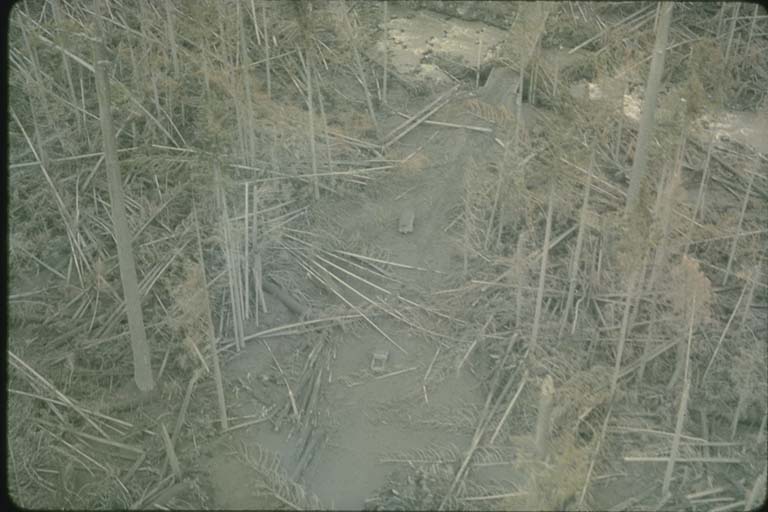
Photo: USGS |

Photo: USGS |
|
|
Mount St. Helen's | |
|
Image Analysis: 1. When and where was this image captured? 2. What is happening in this image? 3. What specific people/objects do you see? 4. What do you notice about the object's condition or the people's expressions or appearance? 5. Why would the person choose this particular scene to capture? 6. What information do the words accompanying the image provide? 7. What is missing from the image? 8. What problems for people are suggested by the images? 9. What is interesting or surprising about this image? 10. What additional information about the event did you learn from
this image?
Personal Account Analysis: 1. When and where did this interview take place? 2. What encounter with nature is described in this personal account? 3. How long after the event occurred was this inteview made? 4. What words or phrases best create a visual image of the event? 5. What attitude towards this event does the person seem to have? 6. Who or what at does this person seem to believe is responsible for this event occurring? 7. What problems or effects does the event seem to have had on people's lives? 8. What lesson does this person seem to have learned from this event? 9. Is there anything interesting or surprising to you about this person's reaction to the situation? 10. What new insights into the natural event does this interview provide
you?
Lyrics Analysis: 1. If there is a cover to this piece of sheet music, examine it carefully. What message does the cover give you about the event? 2. What natural event is this song about? 3. Read through the lyrics. Write a summary describing the main idea of the song. 4. List any words in the song with which you are not familiar. Find their meanings in a dictionary. 5. Choose one or two phrases of the song that are interesting to you. Explain why they caught your attention. 6. Who or what does the song writer feel is responsible for the event? 7. What problems or effects of the event are mentioned in the song? 8. What new insights does this song give you about the event described? 9. What surprises you about the song? 10. What questions do you have?
Additional Resources: 1. What additional information
|

Abandoned vehicles in Green River valley. The northward directed lateral blast, loaded with volcanic debris, caused widespread devastation as far as 19 miles from the volcano. An area on the fringe of the devastation is shown here. In this zone referred to as the seared zone, the trees remained standing but were singed by the hot gases of the blast. A similar laterally directed explosion is thought to have occurred at Mount Saint Helens about 1,100 years ago. The photo was taken on May 24, 1980. Photograph Credit: Dept. of Natural Resources, State of Wash.
Lyrics: The Legend of Harry and the Mountain
I can see smoke upon the mountain,
For fifty years old Harry lived where he wanted to stay
Now there's smoke upon the mountain,
In the month of March she trembled hard, but made it anyway
Now Harry, as I bow my head, I'll say a prayer for you.
Now there's smoke upon the mountain,
Pacific Challenger Records, Inc.
Other Resources: Mt. St. Helen's
Nat. Monument
Back to Nature's Fury Part 2 Nature's Fury web pages published and maintained by P.
Solfest & K. Wardean
|
|